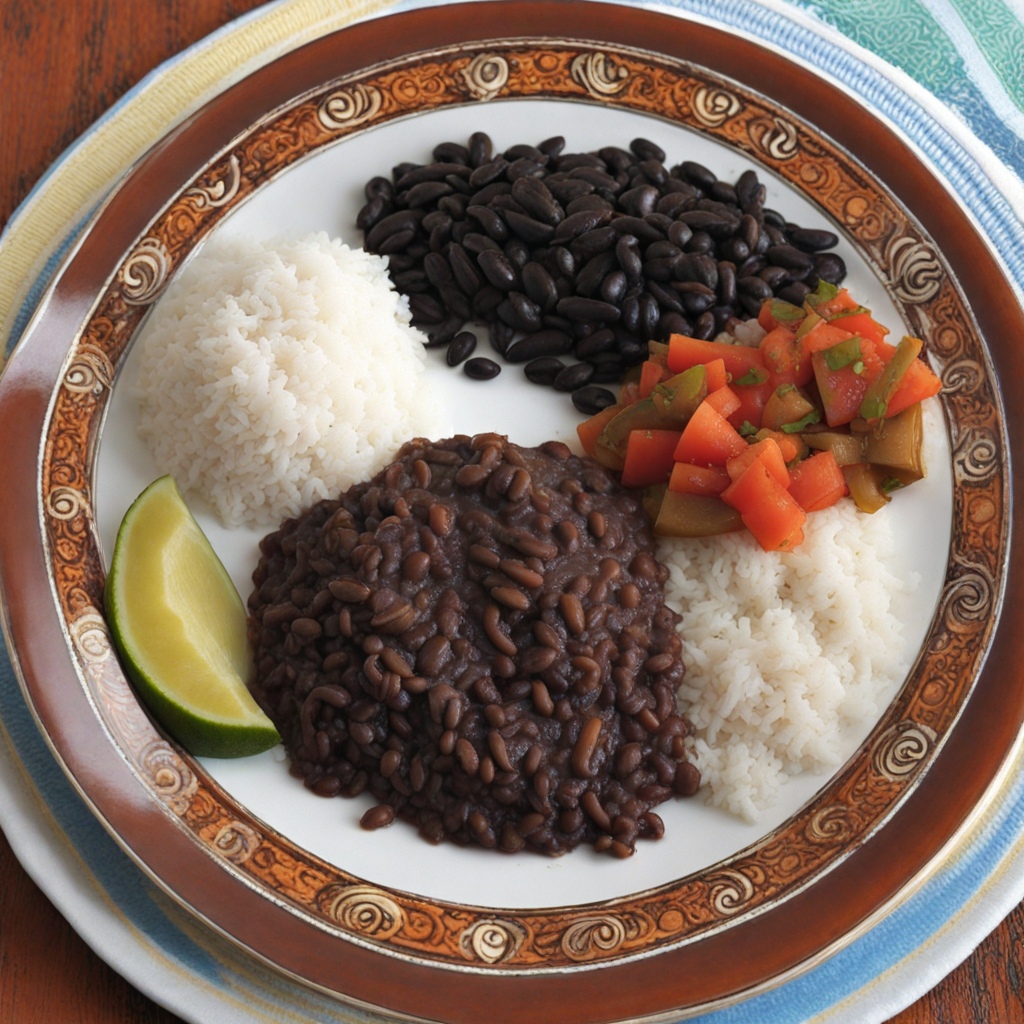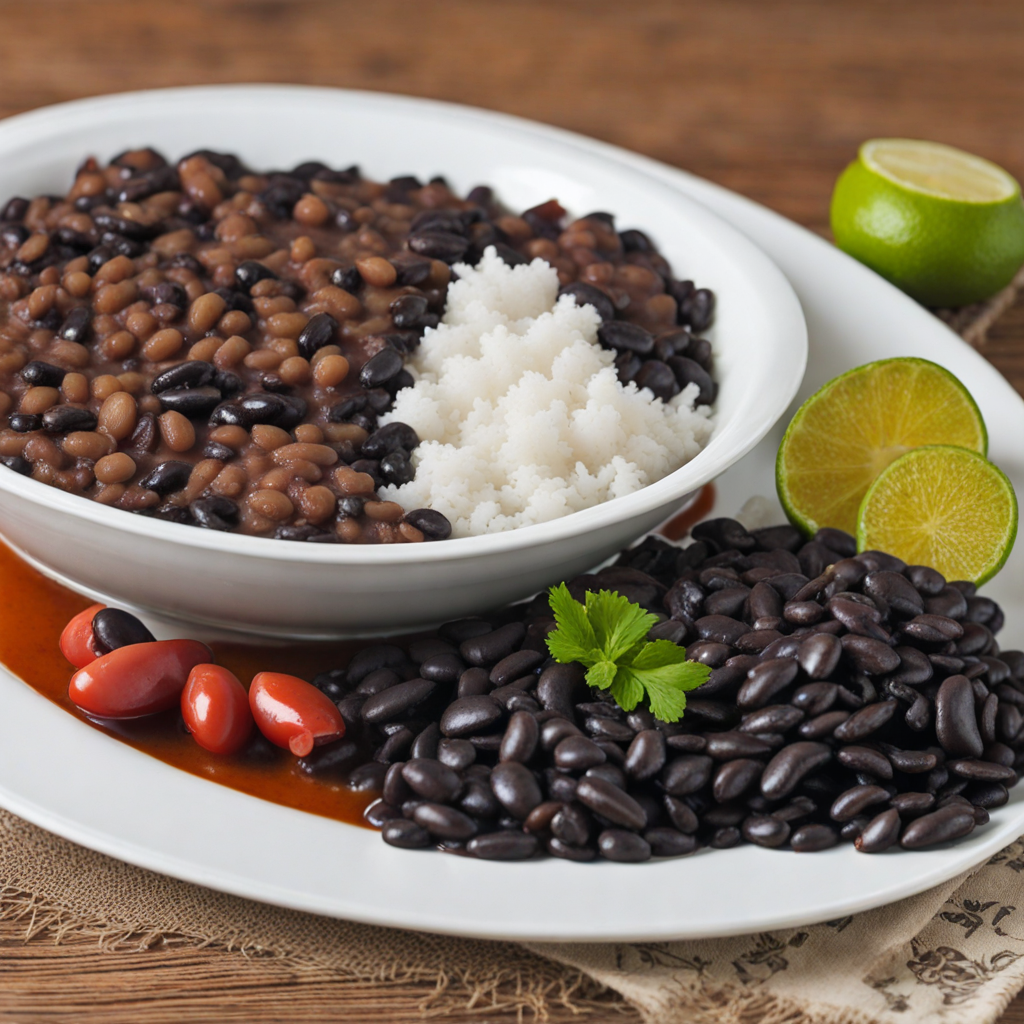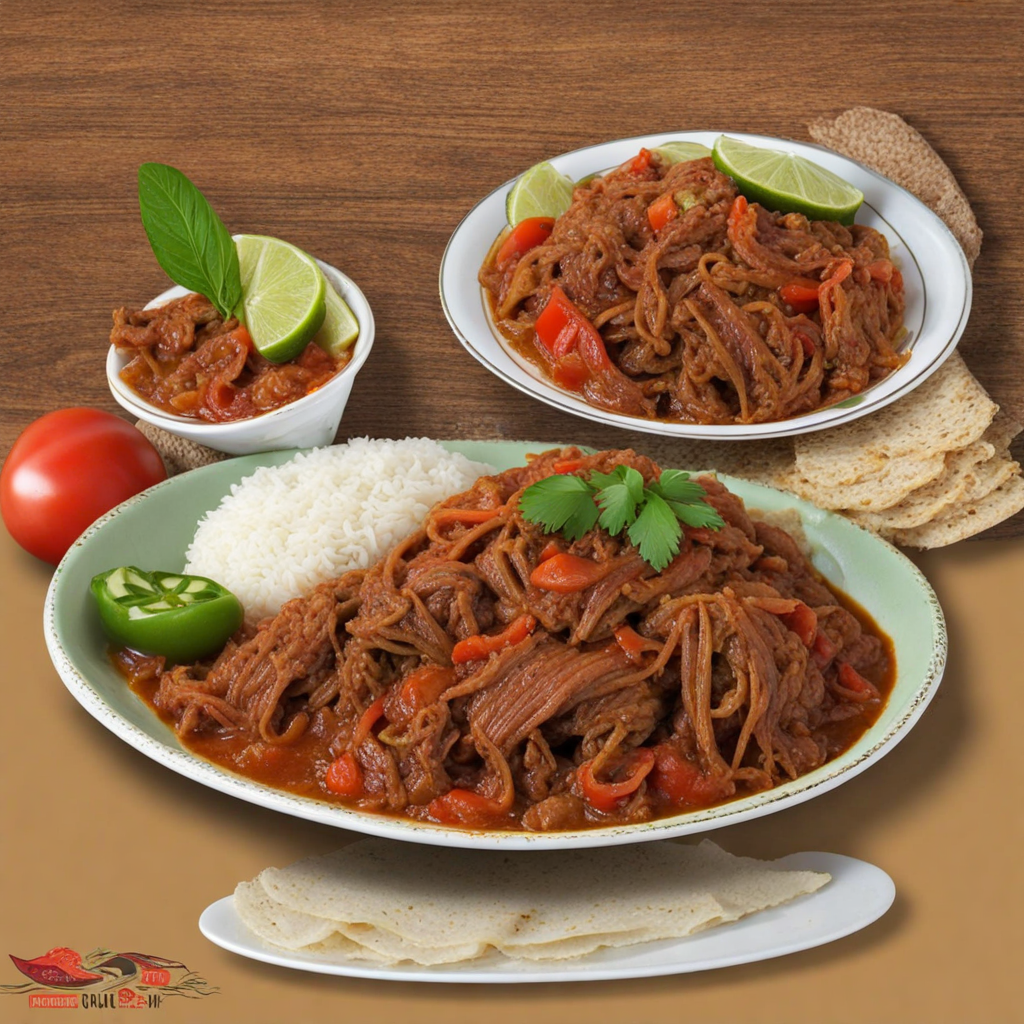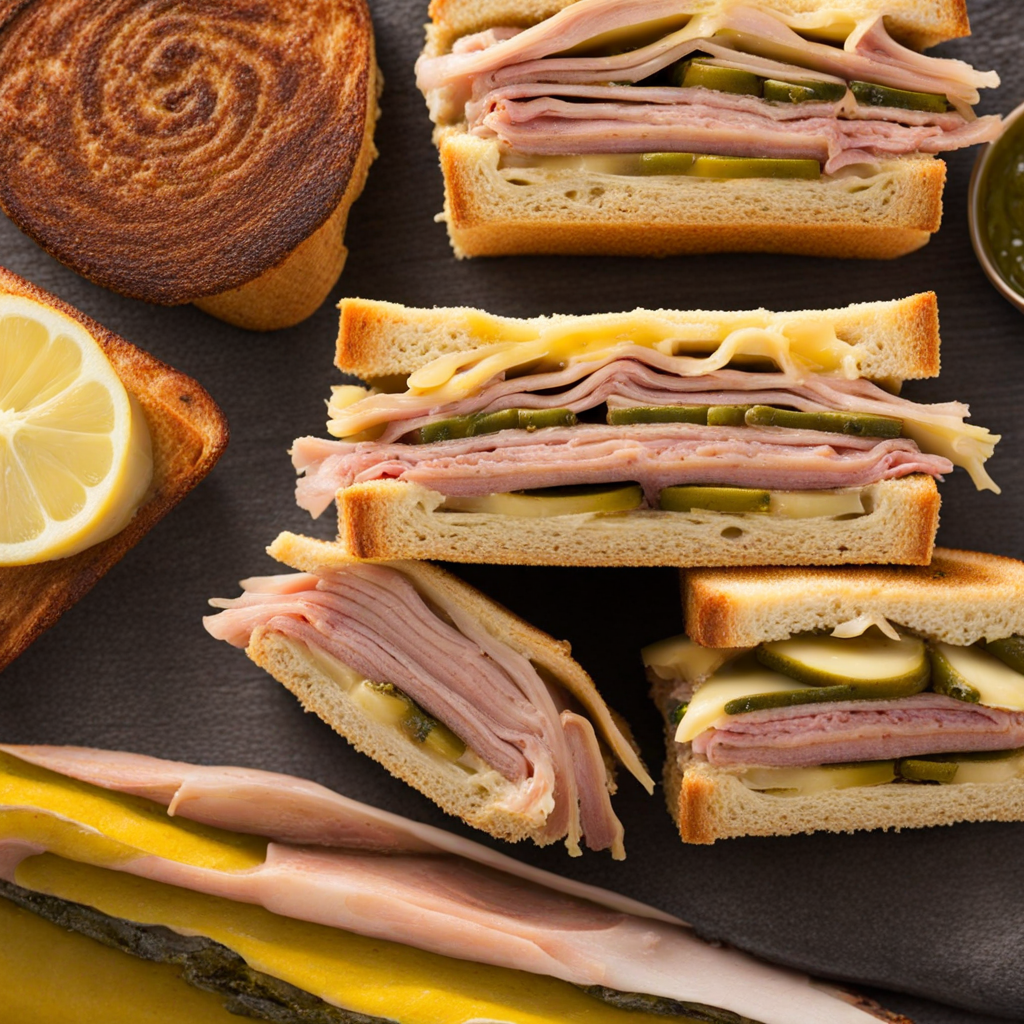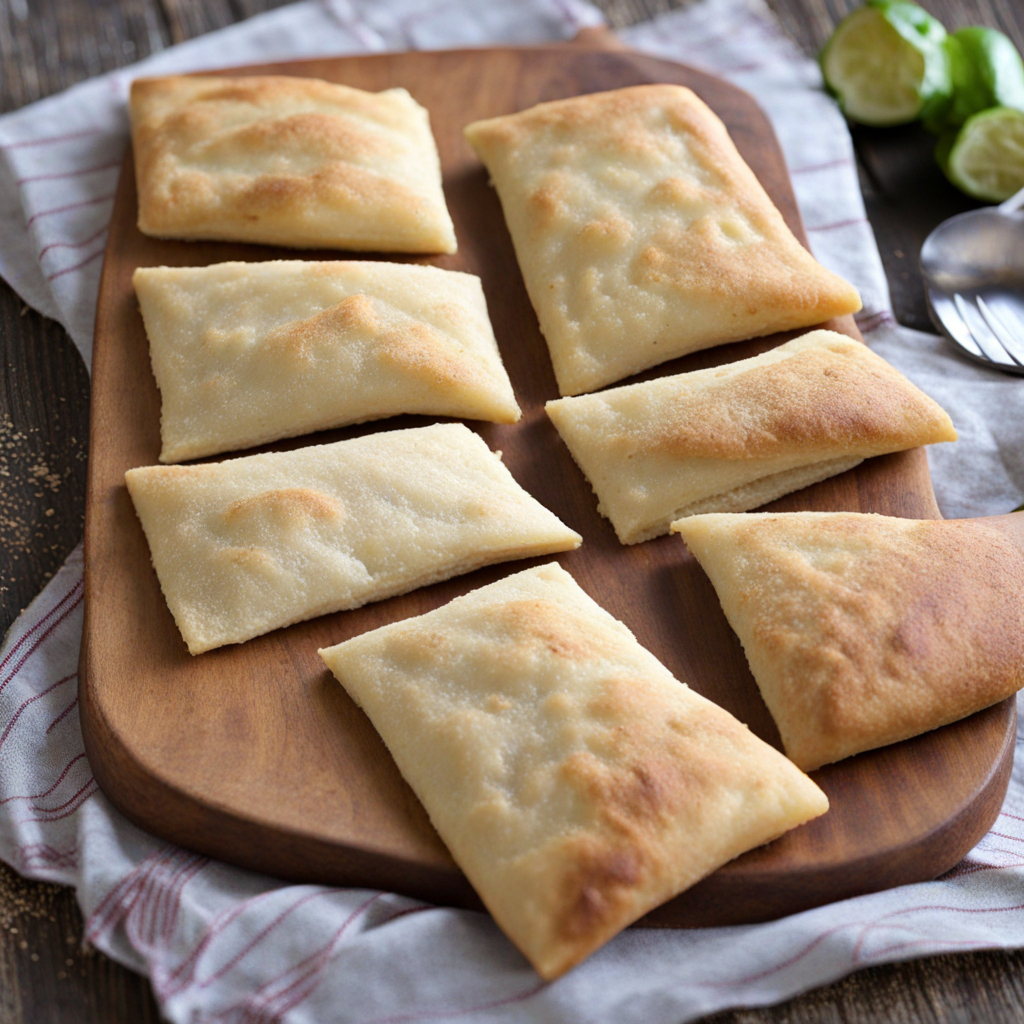Platillo Moros y Cristianos
Platillo Moros y Cristianos is a traditional Cuban dish that beautifully blends rich flavors and textures, showcasing the island's diverse culinary heritage. The name translates to "Moors and Christians," symbolizing the historical interplay between African and Spanish cultures. This dish primarily consists of black beans, known as "moros," and white rice, referred to as "cristianos." The beans are slow-cooked to perfection, allowing their earthy notes to meld seamlessly with a medley of spices, including garlic, cumin, and bay leaves, creating a savory base that is both comforting and satisfying. The preparation of Moros y Cristianos is an art form in itself. The black beans are simmered until tender, absorbing the aromatic flavors while maintaining their integrity, while the rice is cooked separately to achieve a fluffy texture. Once both components are ready, they are combined in a harmonious embrace, allowing the beans' deep color to infuse the rice. This dish is often garnished with fresh cilantro or a squeeze of lime, enhancing its vibrant taste profile and adding a refreshing contrast to the richness of the beans and rice. Served as a staple alongside various meats, such as roasted pork or fried plantains, Moros y Cristianos is a versatile dish that can hold its own or complement a multitude of flavors. It's not just a meal; it's a celebration of the cultural fusion that defines Cuban cuisine. With each bite, you experience a story of history, resilience, and the love of food that is deeply embedded in the heart of the Cuban people.
How It Became This Dish
Platillo Moros y Cristianos: A Culinary Tale of Cultures in Cuba Origins: A Historical Fusion Platillo Moros y Cristianos, or "Moors and Christians," is a quintessential dish from Cuba that embodies the island's rich history and cultural tapestry. The dish consists primarily of black beans (the "Moors") and white rice (the "Christians"), a culinary representation of the historical conflicts and eventual blending of cultures that shaped the Caribbean. The origins of this dish can be traced back to the Spanish colonization of the Americas in the late 15th century. The Spanish brought with them a plethora of culinary traditions, many of which were influenced by their interactions with North African and Moorish cultures during the Reconquista—a period of conflict that lasted from the 8th to the 15th century, culminating in the expulsion of the Moors from Spain. The use of rice and beans in Cuban cuisine is deeply rooted in these historical exchanges, as rice was introduced to the New World by the Spanish, while beans were among the indigenous ingredients that the natives cultivated long before European contact. As the Spanish settled in Cuba, they began to incorporate local ingredients and cooking techniques into their culinary repertoire. The black bean, a staple in West African cuisine, found its way into Cuban kitchens, further enriching the island's gastronomic identity. The cooking method for Moros y Cristianos, which involves simmering black beans with spices and serving them alongside fluffy white rice, reflects both African and Spanish culinary influences. Cultural Significance: A Symbol of Unity and Identity Moros y Cristianos is more than just a dish; it is a symbol of the cultural syncretism that characterizes Cuban identity. In a country marked by diverse influences—from indigenous Taíno to Spanish settlers, African slaves, and later immigrants from Europe and Asia—the dish encapsulates the blending of flavors, traditions, and histories. In Cuba, the preparation and sharing of Moros y Cristianos often occur during significant celebrations and gatherings, reinforcing its communal aspect. It is a staple at family reunions, weddings, and public festivities, serving as a bridge between generations and a touchstone of Cuban culinary heritage. The dish is also commonly served alongside other traditional Cuban foods, such as yuca, plantains, and roasted meats, creating a vibrant feast that showcases the island's agricultural bounty. Moreover, Moros y Cristianos has become a symbol of national pride. The dish is celebrated not only in homes but also in restaurants and cultural festivals, where it is presented as a representation of Cuban gastronomy. The juxtaposition of the dark beans and the white rice, often garnished with spices and herbs, serves as a visual metaphor for the blending of cultures that has defined Cuba's history. Development Over Time: From Ancient Roots to Modern Culinary Scene The evolution of Moros y Cristianos over the centuries reflects broader changes in Cuban society, agriculture, and culinary practices. In its earliest iterations, the dish was prepared using basic ingredients and techniques, relying heavily on what was available in the local environment. As Cuba's agricultural landscape transformed—partly through the sugarcane boom and the establishment of plantations—so too did the methods and flavors associated with Moros y Cristianos. In the 19th century, the introduction of spices like cumin, bay leaves, and garlic became commonplace in the preparation of the dish, enhancing its flavor profile and making it more complex. These ingredients, influenced by African and Spanish culinary practices, contributed to a richer taste and aroma, elevating Moros y Cristianos from a simple meal to a culinary experience. The Cuban Revolution of 1959 marked another significant turning point in the evolution of Moros y Cristianos. The political changes brought about by the revolution affected agricultural production and food availability. The government implemented policies that promoted self-sufficiency, leading to a resurgence of traditional farming practices and the use of local, seasonal ingredients. This emphasis on local sourcing allowed chefs and home cooks to experiment with different variations of the dish, incorporating regional ingredients and flavors that reflected the island's diverse landscapes. In contemporary Cuba, Moros y Cristianos has found its place in the global culinary scene, with chefs and food enthusiasts recognizing the dish as a representation of the island's unique cultural identity. Restaurants in Cuba and abroad feature modern interpretations of the dish, incorporating innovative techniques and presentation styles while still honoring its traditional roots. Additionally, the dish's popularity has grown internationally, with Cuban expatriates and food lovers celebrating its flavors and the story it tells. A Culinary Legacy Today, Moros y Cristianos stands as a testament to Cuba's rich and complex culinary heritage. It reflects the island's historical narratives, cultural exchanges, and the spirit of resilience that has defined its people. As Cuba continues to navigate its place in the modern world, Moros y Cristianos remains a beloved dish that resonates deeply with Cubans and those who have come to appreciate the richness of their culinary traditions. In conclusion, Platillo Moros y Cristianos is more than just a meal; it is a cultural artifact that speaks to the heart of Cuba's identity. It connects the past with the present, uniting diverse influences into a harmonious culinary experience that is both comforting and celebratory. Whether enjoyed at a family gathering, a festive occasion, or a fine dining restaurant, Moros y Cristianos invites everyone to partake in a historical journey through flavors, traditions, and shared stories. As it continues to evolve, this iconic dish will undoubtedly remain a cherished symbol of Cuba’s resilience and cultural richness for generations to come.
You may like
Discover local flavors from Cuba


